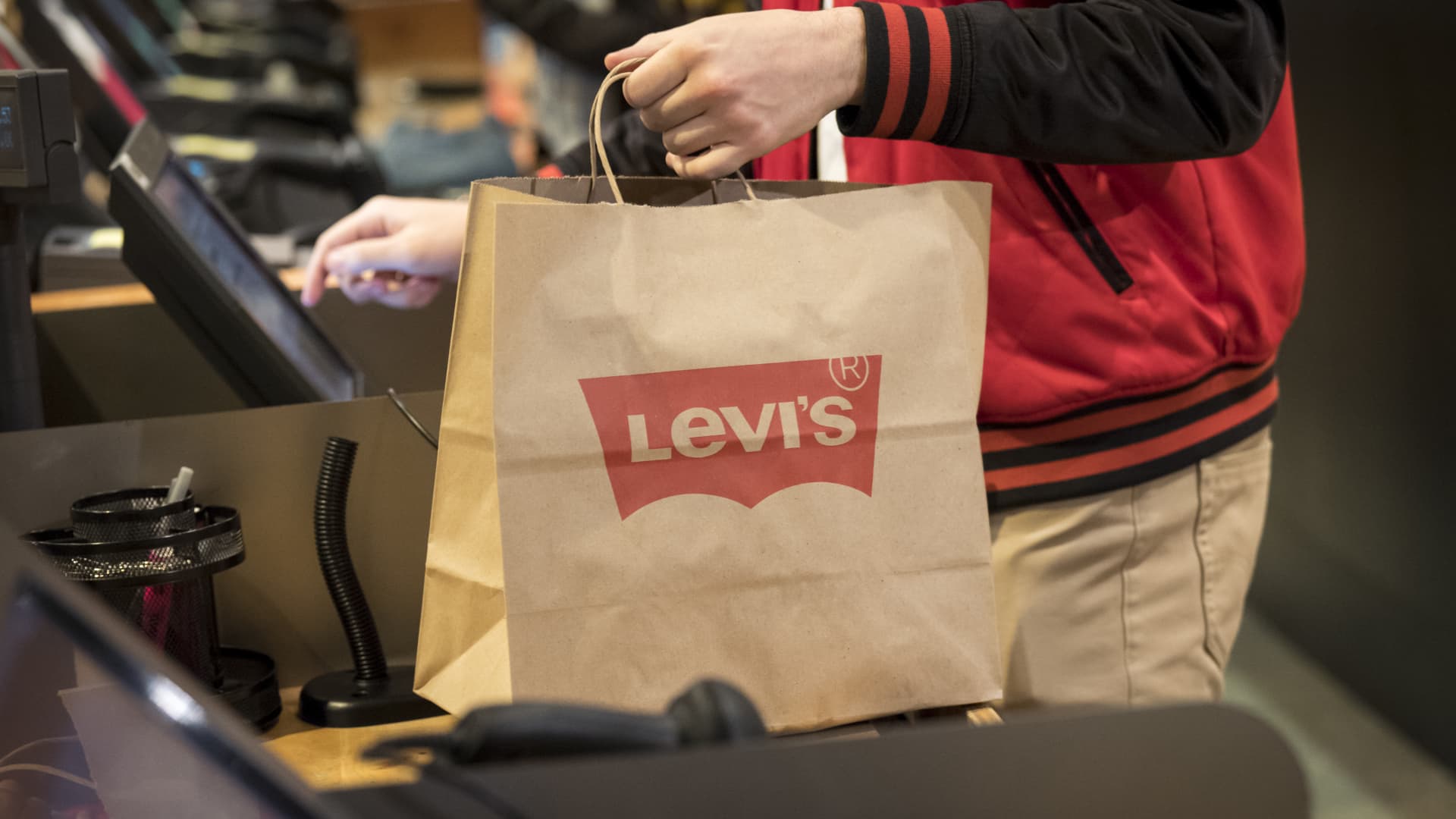Denim retailer Levi Strauss & Co. on Tuesday reported fiscal first-quarter earnings and revenue that topped analysts’ estimates as it sold more of its jeans and T-shirts at higher price points, often directly to customers.
Levi also reaffirmed its forecast for fiscal 2022, assuming no significant worsening of inflationary pressures or closures of global economies. It took into account any hit from its recent decision to temporarily suspend business in Russia, which represents roughly 2% of its total sales.
The retailer has yet to see consumers trade down for less expensive apparel, even as everything from gasoline prices to grocery bills surge, Levi CEO Chip Bergh told CNBC in a phone interview. And still, as the company has raised prices on some items to offset other expenses within the business, consumer demand has remained strong, he added.
To be sure, Bergh said Levi is keeping a close eye on consumer demand, knowing that projections of a looming recession have been growing among economists. “We don’t have our head in the sand,” the CEO said. “If we see [demand] starting to get wobbly, we will take the appropriate action.”
Levi shares rose around 1.5% in extended trading, after closing the day down 1.5%.
Here’s how Levi did for the three-month period ended Feb. 27 compared with what Wall Street was anticipating, based on a survey of analysts by Refinitiv:
- Earnings per share: 46 cents adjusted vs. 42 cents expected
- Revenue: $1.59 billion vs. $1.55 billion expected
Levi reported net income of $196 million, or 48 cents per share, compared with net income of $143 million, or 35 cents a share, a year earlier. Excluding one-time items, it earned 46 cents a share, better than the 42 cents that analysts had been looking for.
Revenue rose 22% to $1.59 billion from $1.31 billion a year earlier. That topped expectations for $1.55 billion.
Levi said it took a roughly $60 million hit to sales due to supply chain constraints during the latest period. Its global direct-to-consumer sales rose 35% from the prior-year period, and wholesale revenue was up 15%.
While Levi still partners with big-box retailers such as Target and department stores like Macy’s to sell its jeans, the company has increasingly pushed customers toward its own brick-and-mortar stores and website. Not only can those transactions be more profitable, but it allows Levi to build stronger relationships with shoppers and collect more insights on their browsing habits. Direct-to-consumer represented 39% of total sales in the quarter, up from 38% in the previous period and 36% a year ago, the company said.
Broken down by region, sales climbed 26% in the Americas, rose 13% in Europe, and grew 11% in Asia on a year-over-year basis.
Levi reaffirmed its outlook for fiscal 2022, which calls for revenue to grow between 11% and 13% year over year. Analysts have projected an increase of 11.8%.
The retailer still sees its annual per-share earnings ranging between $1.50 and $1.56, compared with analysts’ outlook of $1.54.
“The denim category is growing in a low-double-digit [rate] relative to where it was before pandemic,” Chief Financial Officer Harmit Singh told CNBC, saying “the world continues to become a lot more casual.”
Singh added: “We’ve seen demand in March maintain the momentum, and that gives us confidence about the rest of the year.”
Find the full earnings press release from Levi here.
